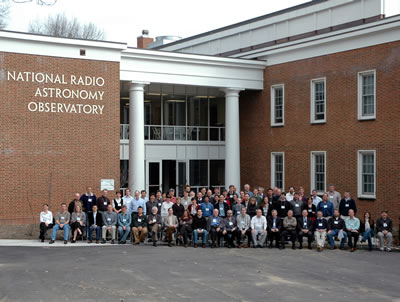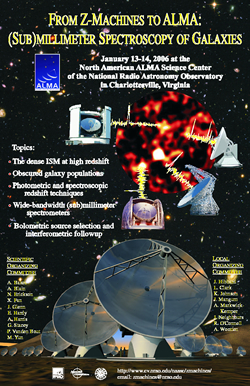Abstract Detail
14 January, 2006 - 11:05 AM Photometric redshifts for sub-mm galaxiesItziar Aretxaga (INAOE) Ground-based submillimetre and millimetre blank-field surveys have identified more than 150 galaxies, the majority of which are believed to be heavily dust-obscured starburst galaxies. Larger numbers of these galaxies still will be discovered in the next generation of (sub-)mm surveys. An efficient photometric redshift technique is clearly
needed in order to select subsamples of objects that will enable detailed follow-up experiments to derive the physical and clustering properties of the galaxies and their cosmic evolution.
We will describe three different methods that our group has been developing and using to derive photometric redshifts, and we will discuss their different degrees of success and innherent biases.
We present an updated assesment of the accuracy with which radio-mm-FIR photometric redshifts can be obtained in the light of the mounting optical/IR and CO spectroscopic data, which reconfirm that photometric redshifts can indeed be used as a selection technique to produce (sub)millimetre galaxy samples in redshift intervals of dz ~ +/- 0.3 to 0.7 (i.e. the rms dispersion in the spectroscopic-z - photometric-z plot). This accuracy depends on the combination of currently available photometric bands used within the radio-mm-FIR regime, and ultimately, the
true redshift distribution and physical nature of the sub-mm galaxies.
These photometric redshift techniques will be used in combination with the next generation of broad-band spectroscopic receivers at (sub)millimetre wavelengths, not only to identify suitable to target with these spectrometers, but also to guide the tuning of follow-up
observations with narrower-band receivers in thoses cases where the broad-band receivers detect only a single emission-line.
| |






